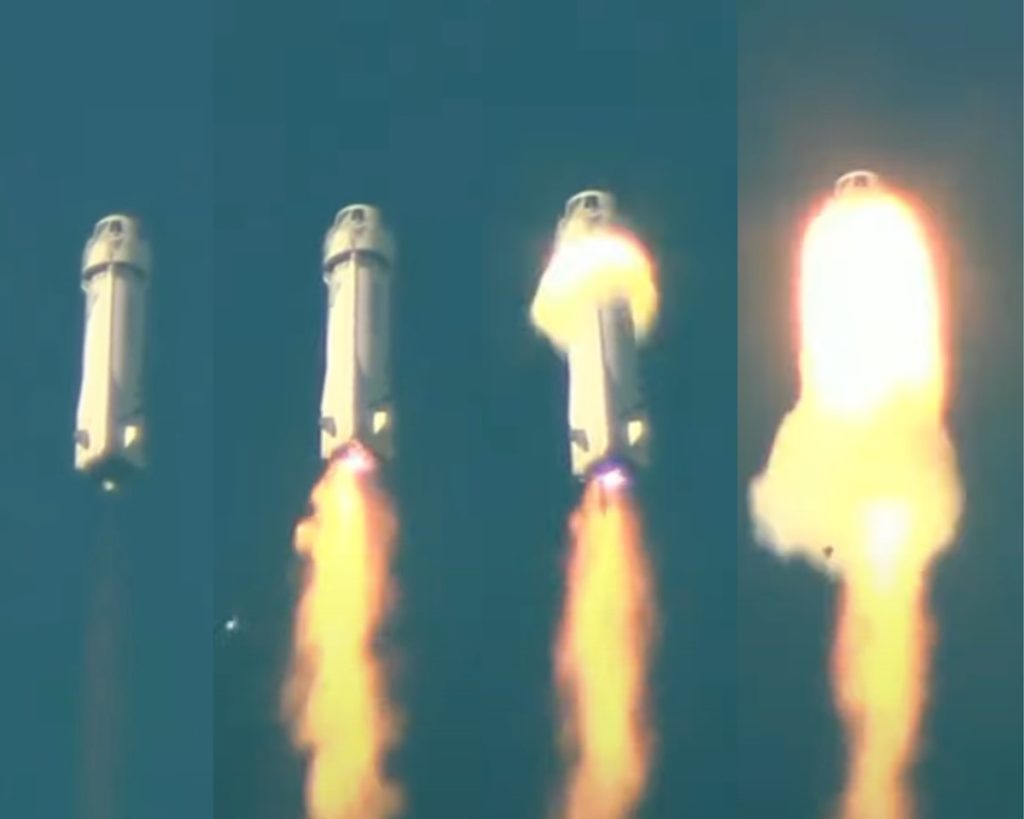Blue Origin’s New Shepard uncrewed suborbital vehicle suffered a failure on its booster rocket just one minute after its launch on 12 September. New Shepard lifted off normally at 14:27 GMT from Blue Origin’s Launch Site One in West Texas. The company has not disclosed the exact cause of the failure, but during the flight the LOx/Liquid Hydrogen burning BE-3 engine’s plume was seen to deviate from normal at around the time the vehicle was undergoing maximum aerodynamic pressure (Max Q). The engine was shut down and the rocket then began to pitch over at an altitude of circa 28,000 feet (8.5 km).
The capsule’s emergency escape solid-rocket system fired at around T+ 1 minute 5 seconds and the capsule successfully separated from the booster. It later landed safely via its parachute system. The booster was, however, destroyed in the aftermath with its debris falling to the ground.

New Shepard fails on its uncrewed flight but its escape system was proven to work. Courtesy: Blue Origin via spaceflightnow.com
The mission, Blue Origin confirmed, was unmanned. Instead, New Shepard carried 36 science and research payloads and thousands of postcards from ‘Club For Future’, a foundation that encourages young people to pursue careers in science, technology, engineering and maths, and in the space industry.
There were no reported injuries to humans on the ground, nor damage to the payloads, according to the company which said: “The capsule escape system functioned as designed.”
Comment by Farah Ghouri and David Todd: The news marked the first major failure for the private suborbital human spaceflight company. It happened on the 23rd flight of New Shepard, resulting in a failure rate of 4 per cent. This risk will undoubtedly put off some would-be suborbital astronauts from flying aboard Blue Origin or its Virgin Galactic competitor. The latter has already had a fatal flight failure during testing. The launch failure also has implications for the Vulcan rocket which was planned eventually to use the BE-3 as an upper-stage engine.
David Todd contributed to this story.






